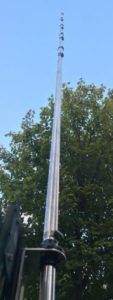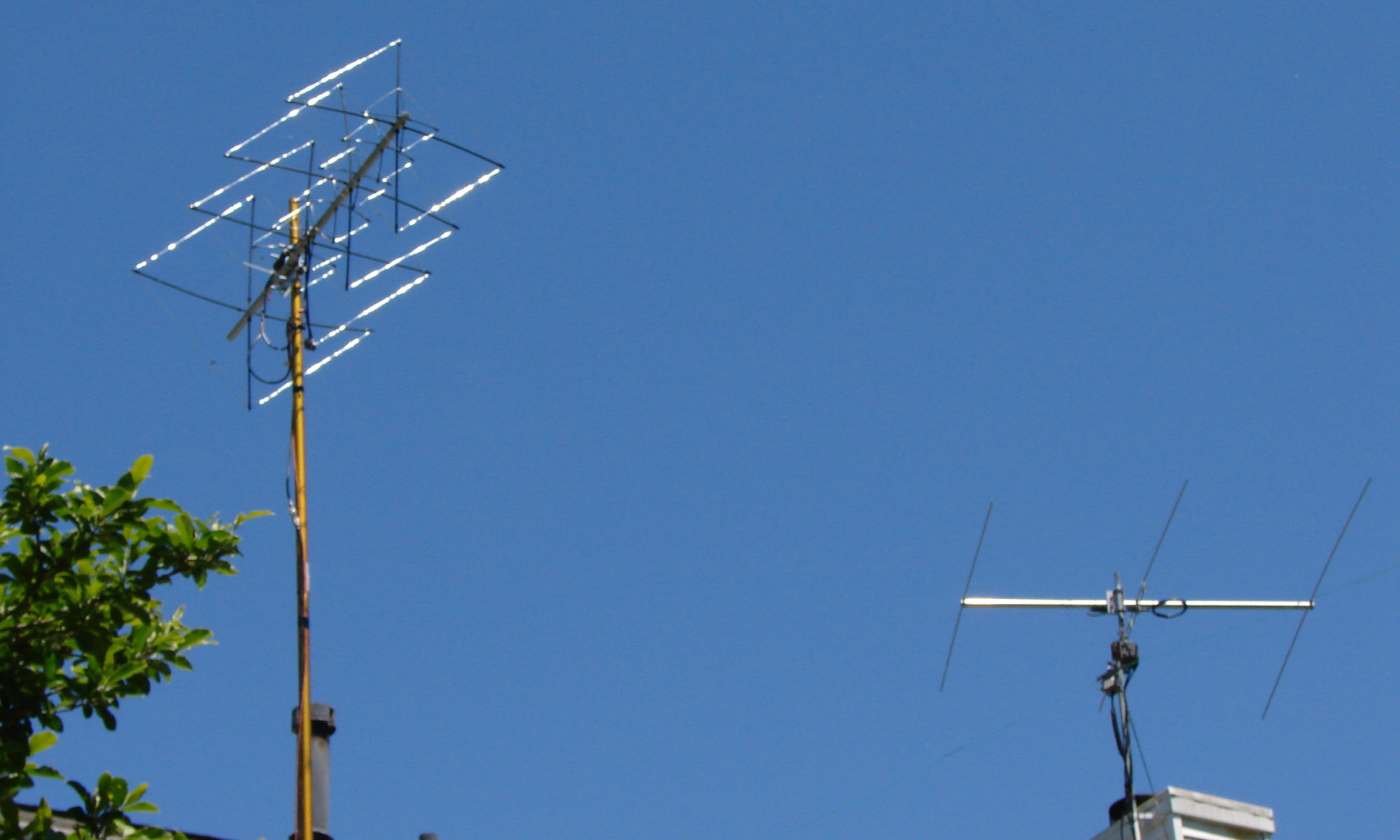 I recently finished building and installing a Hustler 6BTV six band vertical antenna that I purchased from DX Engineering at the Dayton Hamvention. This antenna, which covers 10, 15, 20, 30, 40 and 50 kHz of 80 meters, has been a reliable workhorse among amateurs for many years, and is a favorite of DXpedition operators because of its simplicity and ease of construction and installation.
I recently finished building and installing a Hustler 6BTV six band vertical antenna that I purchased from DX Engineering at the Dayton Hamvention. This antenna, which covers 10, 15, 20, 30, 40 and 50 kHz of 80 meters, has been a reliable workhorse among amateurs for many years, and is a favorite of DXpedition operators because of its simplicity and ease of construction and installation.
For temporary installations, it’s possible to put the pieces together, tune, hoist, mount and guy it, and run out a few radials along the ground in less than an hour. For more permanent installations, there are many augmentations that turn it into a versatile and easy-to-maintain antenna.
In addition to the antenna, I also purchased the SO239 feed bracket, the reinforced lower tube, and an Alpha Delta lightning spark gap from DXE. They also offer two kinds of tilt mounts, but both are designed to mount on a single 2 inch pole driven into the ground. My mount consists of two Unistruts anchored in concrete with aluminum panels mounted across them, which was the mounting arrangement for the 30 and 15 meter vertical which the 6BTV replaces. I needed to fabricate a custom hinged mount, which I did out of a surplus 3-1/2 inch aluminum rack panel cut to size and attached to the lower aluminum panel with a stainless hinge. The top of the hinged rack panel attaches to the upper aluminum panel on two bolts with locknuts, and the antenna mounting bracket is attached to the hinged panel. (See photos in the Gallery section.)
The ground system for the 30 and 15 meter vertical was minimal, consisting of eight insulated copper radials at the surface of the lawn – four quarter-wave for 30 and four shorter ones as a counterpoise for the 15 meter half-wave. I added 30 additional radials of lengths varying from six to 50 feet, limited by the lot line. This ground system vastly improves the performance of the antenna. Impedance measurements show reasonable resistance readings at the feed point (mostly above 30 ohms) which minimizes ground losses. Reactances are under 25 ohms for the most part, and VSWR is under 2.0 over the five bands and over a 50 kHz range of 80 meters (centered on the Extra Class CW segment, of course).
How does it perform on the air? I used the 6BTV during the recent CQ Worldwide phone contest as well as both ARRL CW and phone Sweepstakes, and the weekly CWops sprints. Ruling out lousy propagation during the CQWW SSB weekend, I only have the domestic contests for comparison at this point. I would say that it performs comparably to the 80 meter off-center-fed dipole, and surprisingly well on some bands (including 80 CW) on the shorter domestic paths. I found in at least one instance on 40 meters that stations in parts of the Caribbean that are in the null of the dipole were S9 on the vertical.
I have also done some testing using the Reverse Beacon Network to compare the two antennas. I analyzed the data during a run on 80 meters in SS in which I used both antennas. Generally, the vertical does about as well as the dipole to the southwest and at ranges of 1000 km or so. However, the dipole does a much better job (on the order of 10-15 dB) at closer distances (a few hundred km) and generally to the east. Preliminary testing with a limited set of domestic data (4 data points) shows roughly equal coverage and signal strength on 20 meters, and again with 4 data points the 6BTV outdoes the dipole by between 6 and 15 dB in a variety of directions on 40. These two bands will require more testing, which I hope to achieve during the CQWW CW weekend. I haven’t done any testing on 10 or 30 meters yet.
I’ve also found that the 6BTV is quieter on receive in many instances, particularly where electrical noise from the house gets into the dipole, which runs over the house. Unfortunately, both antennas pick up S9+ QRN from my neighbor’s furnace on 15 meters – a wideband multicarrier buzz that wipes out the entire band and then some.
